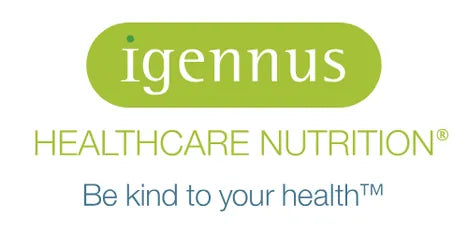The skin is the body’s largest organ, providing an outer layer of protection for everything contained within from infection, chemicals and foreign invaders and much more. Impressively, the area of skin on a human body can cover up to two square metres, make up roughly 15% of bodyweight, and is able to renew itself every 28 days on average. With so many roles in the body, including the support of body temperature, the synthesis of vitamin D from sun exposure and sending signals to the brain in response to sensing heat or pain, its health can be compromised rapidly and often display as problematic skin. While the skin is affected by more obvious factors such as UV exposure, leading to inflammation and tanning (burning) of the skin, it is also affected by less obvious factors such as the diet, overall health and even nutrition deficiencies. It is easy to be convinced by the promises of bold claims on skin care products, but before reaching to a ‘cure-all’ cream for skin blemishes and imperfections, consider what your skin is saying about your health and how you can better support it by directly addressing the problem rather than simply covering it up in an expensive cream.
Getting to know your largest organ
The skin can be divided into three main layers, the epidermis forms the outer, visible layer, the dermis forms the middle layer and the hypodermis is the inner layer. The epidermis is made up of roughly 97% keratinocytes, cells that secrete keratin to help keep the skin waterproof. The dermis consists of the proteins collagen and elastin which help to keep the skin lubricated and flexible, neurons that send signals to the brain when sensing temperature and pain for example, and blood vessels supplying nutrients to both the dermis and the epidermis. The hypodermis contains fat cells known as subcutaneous tissue which attaches to bones and muscles, provides protection from external stimuli and helps to regulate body temperature.
Nutrients to support skin health
Whilst we can see that protein and fat, found in the dermis and hypodermis respectively, are important for skin health, many other vitamins and minerals also play a role. In fact, there are twelve key vitamins and nine minerals which all play an essential role in skin health. (1)
Vitamins: vitamin A, vitamin D, vitamin C, vitamin E, vitamin K, thiamin, riboflavin, niacin, vitamin B6, folate, vitamin B12 and choline
Minerals: calcium, copper, iron, magnesium, phosphorus, selenium, zinc, potassium and sodium (1)
1. Collagen - skin’s best friend
Not only important for skin health, collagen is the most abundant protein in the body, making up roughly 75% of the dermis weight to provide lubrication to skin cells to provide a youthful glow, as well as supporting structure, stability and strength. Production of this important protein declines with age, however, and may provide an explanation of why skin ageing occurs, with women losing roughly 30% collagen during menopause.
Collagen is produced in the body and secreted by cells but it relies on the availability of several nutrients to do so. Amino acids, from proteins consumed in the diet, are important for collagen production, as well as vitamin C, zinc and copper. You can include collagen in the diet through consumption of bone broths, which break down collagen from animal bones used to prepare the broth. When preparing or purchasing bone broth, stick to organic sourced bones to decrease the level of toxins that may be present in the broth. As long as the diet is a rich source of the essential co-factors for collagen production (listed below), collagen supplements should not be needed. Whilst you can purchase collagen-containing cosmetics, research shows favourable benefits in the consumption of collagen over the topical application of collagen. (2)
2. Collagen co-factors: vitamin C, zinc, copper and amino acids
Vitamin C: The skin provides the body's third largest pool of vitamin C, third only to the pituitary and adrenal glands. (3) Whilst vitamin C supports collagen production, it has also been shown to provide antioxidant support to the skin from UV exposure, decrease signs of ageing, improve skin colour in hyperpigmentation, lessen wrinkle depth, improve skin tightness and tone, and improve wound healing. (3)
Vitamin C can be consumed in the diet from fruit and vegetables such as citrus, kiwis, mangoes, tomatoes, peppers and broccoli.
Zinc: Zinc is an important co-factor for many metabolic reactions in the body and skin is, again, the body’s third largest store of zinc, important for the differentiation of skin cells. It is also required for cell synthesis, blood clotting and wound healing, protecting sensory organs and protecting against oxidative stressors. (2) Deficiency of this important co-factor has been linked with hyperpigmentation and dermatitis. (4)
You can consume zinc in the diet from oysters, grass-fed beef, lamb, sesame and pumpkin seeds, chickpeas, lentils, cashews, spinach, asparagus and mushrooms.
Copper: Another important mineral for collagen production, copper sources in the diet include sesame seeds, cashews, soybeans, mushrooms and dark green leafy vegetables.
Amino acids: The most abundant amino acid required for collagen synthesis is glycine, with proline and lysine also required. Whilst animal sources of protein provide all essential amino acids (lysine) from which the body can produce non-essential amino acids (glycine and proline), consumption of a plant-based diet requires more variety in order to obtain a healthy balance of the essential amino acids. You can learn more about protein and how to meet requirements in this article.
3. Support the hypodermis with essential fats
Skin cells, as with all other cells in the body, require basic cellular support with long-chain omega-3 fats important for supporting structure and function of cells. Moreover, the long-chain omega-6 fatty acid arachidonic acid (AA) is also found in the skin, required for the promotion of inflammation when necessary, when injury occurs to the skin, for example. The anti-inflammatory long-chain omega-3 fatty acid EPA is also required to ‘switch-off’ the actions of AA when inflammation is no longer required.
While the skin naturally contains higher concentrations of AA, blood levels of this fatty acid are often high due to the consumption of animal products and processed foods which are rich in vegetable oils and provide a source of the ‘parent’ short-chain omega-6 fatty acid from which AA is synthesised.
Maintaining a balanced level of omega-3, however, can be more difficult. While consumption of oily fish will go a long way (mackerel, anchovies, herring, salmon, sardines), with the levels of likely contaminants in oily fish and the government guideline recommending just one portion per week, consuming a good quality omega-3 fish oil daily is recommended to support both skin health and overall health.
Antioxidants to protect from external sources of oxidative stress
Ageing of the skin is a natural process, but environmental factors may hasten the process. Exposure to UV rays, smoking, pollution and temperature may all lead to oxidative stress in the skin and reduce levels of the important antioxidant vitamin C. Supporting vitamin C levels is important, but there are other antioxidants which have also shown a protective effect from free radical damage in the skin, including beta-carotenes, astaxanthin and Coenzyme Q10. (2)
Beta-carotene provides a plant-based form of provitamin A, with food sources being identified by their bright colours. Look for sweet potato, carrots, dark green leafy vegetables, squash, melon, peppers and tomatoes.
Astaxanthin is another provitamin A which is accumulated by algae in a stressful environment to provide protection. Animals that accumulate astaxanthin from the consumption of algae include naturally pink seafood such as prawns, lobster and salmon.
Coenzyme Q10 is produced by the cells of the body to support energy production and provide antioxidant protection. Whilst levels of CoQ10 naturally peak at the age of 20 and steadily decline thereafter, organ foods are a rich source of this compound.
Have a skin complaint and don’t know where to start?
Whilst the nutrients listed above are important for overall skin health, if you have a specific health complaint, there are other areas you may need to consider to help you move forward with your skin goals. The chart below highlights other areas of health you may wish to consider as well as nutrients which have shown therapeutic support.
Explaining the role of the gut
One of the biggest growth areas in nutrition research currently is that of the microbiome, encompassing the bacteria living both in the body and on the skin facilitating numerous processes including digestion, immune health and metabolism. It is now coming to light that, similarly to vitamins, each strain of bacteria plays a different role in health, with research suggesting the potential for probiotics to support inflammation, oxidative stress, metabolism, and, more specifically, helping with skin conditions such as acne. The overall health of the microbiota can also reflect in skin health with many skin conditions linked to SIBO, dysbiosis, hypochlorhydria, candida, infections and food sensitivities. Carrying out a functional gut analysis may provide further clarity for your symptoms and guide a practitioner in supporting your health needs.
It’s not all about diet. Lifestyle factors can also support skin health
Whilst oxidative damage can occur as a result of poor nutrition and a high sugar diet, lifestyle factors such as stress, lack of sleep, smoking, exposure to UV rays and chemicals found in cosmetics also play a role. Oxidative stress can also negatively affect collagen production and deplete vitamin C levels. (3, 18) It is therefore important to take these factors into consideration when focusing on the health of the skin. Exercise is another important aspect of skin health, supporting blood circulation and the flow of nutrients to skin cells. Skin brushing and proper hydration further support lymph and blood circulation.
References:
- Polefka, T. G., Bianchini, R. J. & Shapiro S. (2012) ‘Interaction of mineral salts with the skin: a literature survey’, International journal of cosmetic science, 34 (5), pp - 416-423
- Vollmer, D. L., West, V. A., & Lephart, E. D. (2018). ‘Enhancing Skin Health: By Oral Administration of Natural Compounds and Minerals with Implications to the Dermal Microbiome.’ International journal of molecular sciences, 19(10), 3059. doi:10.3390/ijms19103059
- Pullar, J. M., Carr, A. C. & Vissers, M. C. M. (2017). ‘The Roles of Vitamin C in Skin Health’. Nutrients, 9, 866; doi:10.3390/nu9080866
- Ogawa, Y., Kinoshita, M., Shimada, S., & Kawamura, T. (2018). ‘Zinc and Skin Disorders’. Nutrients, 10(2), 199. doi:10.3390/nu10020199
- Burris, J., Rietkerk, W. & Woolf K. (2012). ‘Acne: The role of medical nutrition therapy’, Journal of the academy of nutrition and dietetics, 113 (3), pp. 416 - 430.
- Ross-Hansen, K. et al. (2013). ‘The role of glutathione S-transferase and claudin-1 gene polymorphisms in contact sensitization: a cross- sectional study.’ The British journal of dermatology, 168 (4), pp. 762-770.
- Pascal, M. et al. (2018). ‘Microbiome and Allergic Diseases’, Frontiers in immunology, 17, (9), doi: 10.3389/fimmu.2018.01584
- Marcinkowska M., et al. (2018). ‘A Review of Probiotic Supplementation and Feasibility of Topical Application for the Treatment of Pediatric Atopic Dermatitis.’ Current pharmaceutical biotechnology, 19, (10), 827-838. doi: 10.2174/1389201019666181008113149.
- Peroni, D. G., et al. (2010). ‘Correlation between serum 25‐hydroxyvitamin D levels and severity of atopic dermatitis in children’, British journal of dermatology, 164, (5), pp 1078 - 1082.
- Abrahamsson, T. R., et al. (2011). ‘A Th1/Th2-associated chemokine imbalance during infancy in children developing eczema, wheeze and sensitization.’ Clinical & Experimental Allergy, 41 (12): 1729-39.
- Finn et al. (1985) ‘Serum IgG antibodies to gliadin and other dietary antigens in adults with atopic eczema.’ Clinical & Experimental Dermatology, 10: 222-8.
- Koch, C. et al. (2008). ‘Docosahexaenoic acid (DHA) supplementation in atopic eczema: a randomized, double-blind, controlled trial’. Therapeutics, 158, pp 786 - 792.
- Shammas M. A. (2011). ‘Telomeres, lifestyle, cancer, and aging.’ Current opinion in clinical nutrition and metabolic care, 14(1), 28–34. doi:10.1097/MCO.0b013e32834121b1
- Farzaneh-Far, R., et al. (2010). ‘Association of marine omega-3 fatty acid levels with telomeric aging in patients with coronary heart disease’. JAMA, 303 (3), pp. 250-257.
- McCusker, M. M, & Grant-Kels, J. M. (2010) ‘Healing fats of the skin: the structural and immunologic roles of the omega-6 and omega-3 fatty acids.’ Clinics in Dermatology, 28, pp 440-51.
- Parodi A, et al. (2008). ‘Small intestinal bacterial overgrowth in rosacea: clinical effectiveness of its eradication.’ Clinical Gastroenterology and Hepatology, 6 (7) pp. 759-64.
- InformedHealth.org [Internet]. Cologne, Germany: Institute for Quality and Efficiency in Health Care (IQWiG); 2006-. Rosacea: Overview. 2006 Feb 14 [Updated 2018 Sep 20].Available from: https://www.ncbi.nlm.nih.gov/books/NBK279476/
- Sibilla, S., et al. (2015). ‘An overview of the beneficial effects of hydrolysed collagen as a nutraceutical on skin properties: scientific background and clinical studies.’ The open nutraceuticals journal, 8, pp. 29-42








